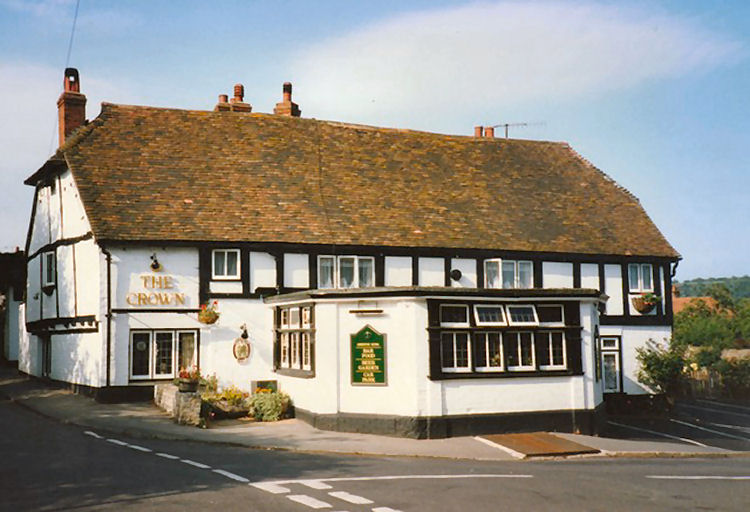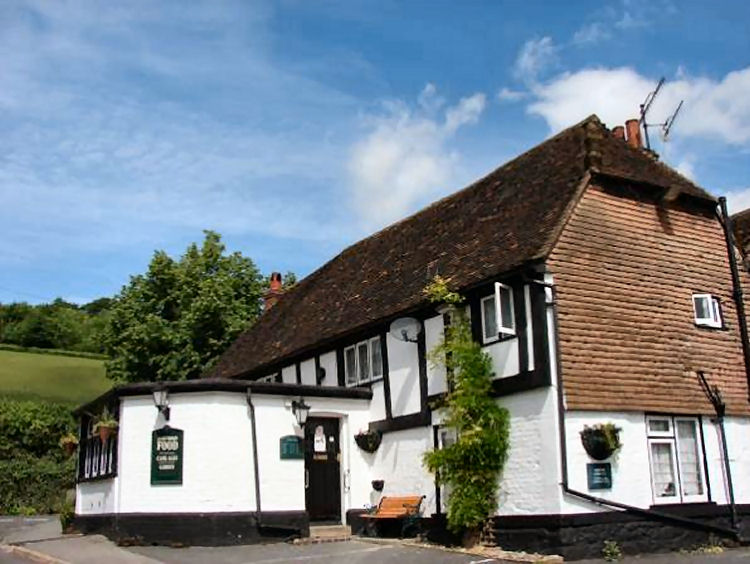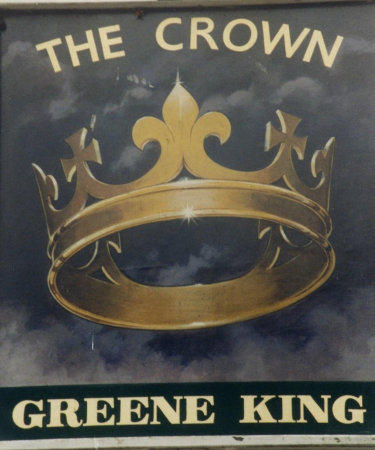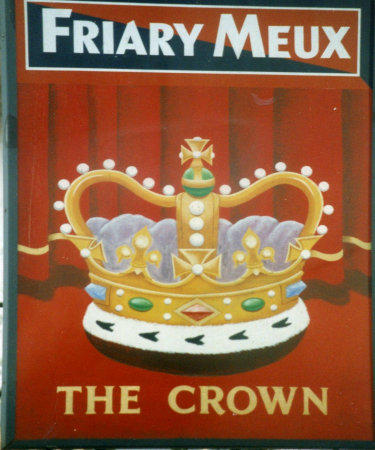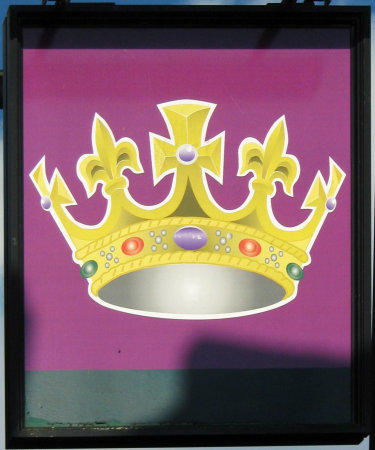|
From the
https://shorehamkenthistory.weebly.com/the-crown.html
accessed 6 March 2023.
Text by James Saynor.
Sitting at the north end of the High Street on the corner of the
road named after it, the "Crown" may be slightly older than the "George
Inn" at the other end of the village, and is thought to date from
1454. Built end-on to the street, like one or two other
timber-framed buildings in Shoreham, it originally had an open hall
in the centre stretching up to the roof: timbers blackened by smoke
from a hearth in the hall bear witness to this. The building was
extensively reconstructed in the 17th century, using many timbers
from the earlier house, and a large two-storey extension was added
at the rear in the 18th and 19th centuries.
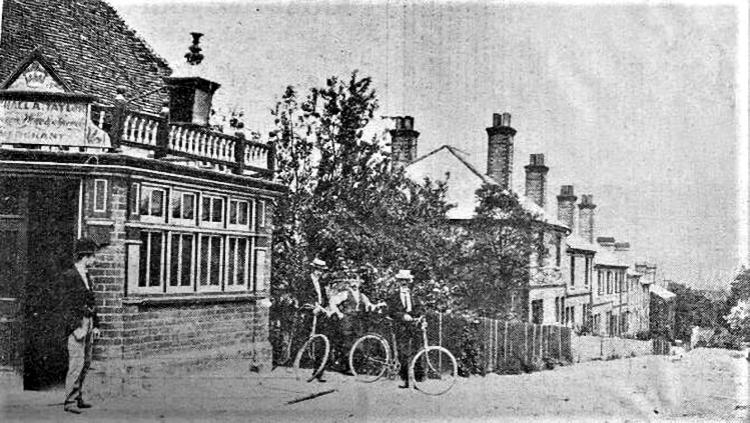
Early 1900s. Standing between the two gents with bicycles is the
landlord's son, Harry Taylor.
It has been known as the "Crown" since at least 1607, and was
designated – along with the "George" – as a public house in the census
of 1841. Other pubs in the village at the time were unlicensed
alehouses. It became known as the "Crown Hotel" and you could book
rooms there until after the Second World War.
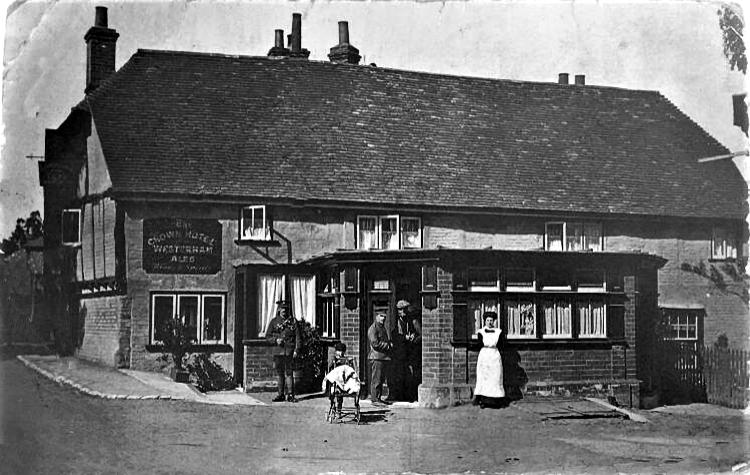
WW1-era. The nurse could be Nurse French who looked after the
villagers from 1900-1922
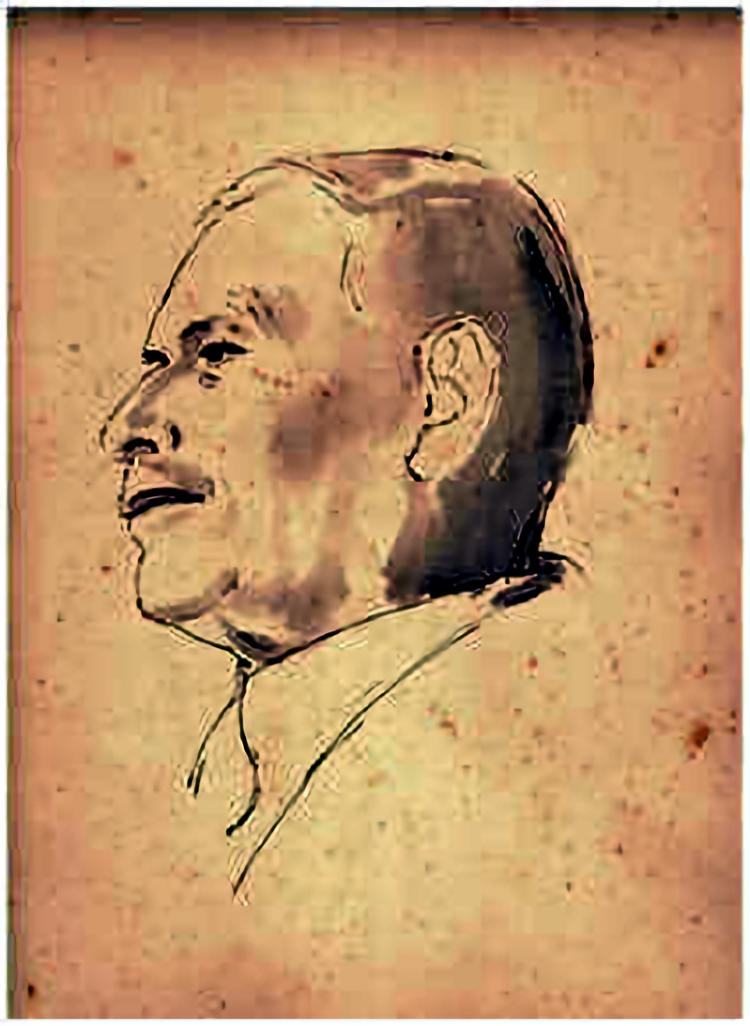
Drawing of publican Arthur Archer by Charles Franklin White.
Arthur Archer ran the pub in the early part of the 20th century,
when it was a lodge for
the Odd Fellows club. Members had to give a password through a
special panel in a
door to be admitted on meeting nights. Jessie Jeffries later became
publican, and her
nephew Philip Crome lived at the "Crown" as a child from the spring of
1941. His father
Leonard was stationed at Biggin Hill, and Philip remembered the
barrage balloons “all
over the farmer’s field opposite the "Crown”.
Back in the 18th century, the "Crown" was said to be a haunt of the
infamous Hawkhurst
Gang of smugglers. Dodging customs officers on the main roads,
smugglers would
prefer the muddy, flinty lanes through remote Shoreham. Tea, brandy,
lace and tobacco
might be some of the contraband. The "Pig and Whistle" pub on the
eastern hill was
another staging post for the smugglers.
Violent encounters with both customs men and fellow ne’er-do-wells
were common. One story tells of a Spaniard who was wounded and
brought to the "Crown" to recuperate. It is said he married the
daughter of the innkeeper, Mr. Squib, but was then seized and
press-ganged onto a ship. By the time he found his way back to
Shoreham his wife had died in childbirth, leaving the Spaniard
distraught. Local newspapers claimed that the grieving ghost of the
man continued to bother inhabitants of the pub two centuries later.
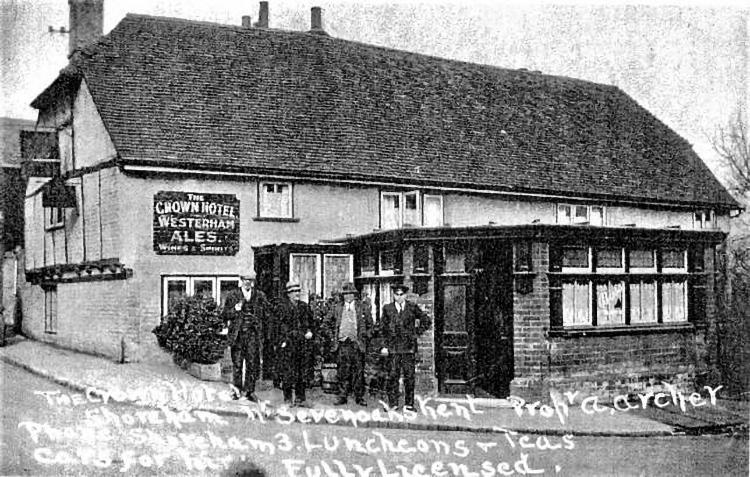 |
